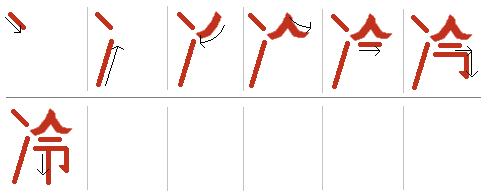In this lesson, you will learn five words that all relate to water in one way or another. Most very simple, all very common.
——————————————————————————————————
.
江 = 강 = River
(Korean name: 강 강)
Whenever you see “氵” the meaning of the character usually relates to water in some way. 江 is very easy to remember because of this water designation, plus the “工” part of the character looks like a flowing to me. The “工” part of the character actually has a purpose of indicating pronunciation in Chinese, but for the casual learner of Hanja (at this point), you don’t need to worry about it.
 Common Words using this Character:
Common Words using this Character:
江 = river
漢江 = the Han River
江北 = north of the river
江口 = a mouth of a river (estuary)
江南 = popular district in Seoul (Gangnam) “south of the river”
For the first time, all the words above contain only Hanja characters! Woohoo!
——————————————————————————————————
.
水 = 수 = Water
(Korean name: 물 수)
Whereas 江 specifically refers to a river, 水 refers to water in general.
 Common Words using this Character:
Common Words using this Character:
음료水 = drink/beverage
향水 = perfume
생水 = natural/spring water
호水 = lake
홍水 = flood
水분 = moisture
폐水 = waste water
水해 = water damage
水영 = swimming
水요日 = Wednesday
下水 = sewage
上水 = water that one uses through plumbing (it comes up [上] through the pipes)
Notice that it becomes increasingly easier to understand the meaning of a character in a word if you know the meaning of the other characters and the translation in English. For example, “廢水” (폐수) means “waste water.” Through this, you can easily deduce that the meaning of the character “廢” means “waste.”
——————————————————————————————————
.
川= 천 = Stream
(Korean name: 내 천)
Actually, this character is not found in very many common Korean words. Drawing this character however is very easy – and with its relation to “water” words, I decided to introduce it in this lesson.
The picture is supposed to represent a flowing stream.
 Common Words using this Character:
Common Words using this Character:
인川 = the city of Incheon
개川 = a small stream
청계川 = the name of a (man-made) stream in the center of Seoul
 ——————————————————————————————————
——————————————————————————————————
.
冷 = 냉/랭 = Cold
(Korean name: 찰 랭)
Not to get on a whole Korean language history lesson here, but traditional Korean words didn’t have “ㄹ” as the first letter in a syllable of a word. Instead, it was pronounced as “ㄴ.” So, depending on the position of this character, it could be pronounced as “냉” or “랭”. Note that newer words that have made their way into the Korean language borrowed from other languages can have “ㄹ” as the first letter of the word (for example, 라면, 라디오, etc…). Used to indicate that something is cold.
Common Words using this Character:
冷면 = Naeng-myeon (cold noodle dish)
冷장고 = refrigerator
冷동실 = freezer
冷방 = air conditioning
——————————————————————————————————
.
本 = 본 = Origin
(Korean name: 밑 본)
Not entirely related to water, but water has to originate from somewhere, right? No? Haha, anyways, a very common character that is also found in the name of “Japan.”
 Common Words using this Character:
Common Words using this Character:
日本 = Japan (day origin)
日本人 = Japanese person
本래 = originally
원本 = an original document
기本 = basic/fundamental
근本 = root, basis
자本 = capital (in business)
——————————————————————————————————
Okay, I got it! Take me to the next lesson! Or,
Click here for a PDF copy of all our Hanja lessons.



